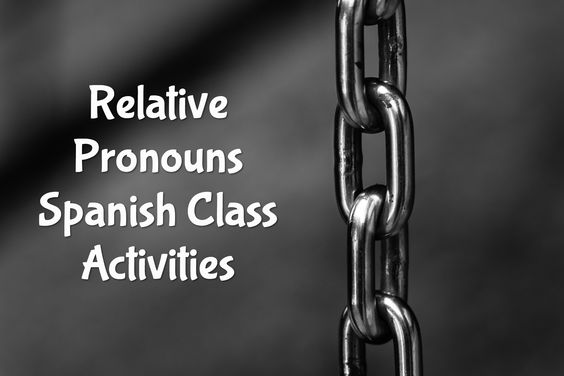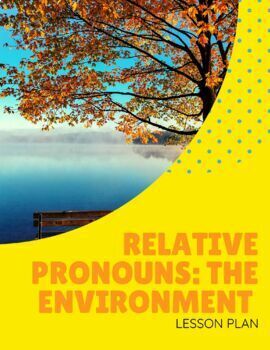
Spanish relative pronouns are pronouns that are used to introduce a subordinate clause that modifies a noun or pronoun in the main clause. The most common relative pronouns in Spanish are:
-
Que: used to refer to people, animals, and things. Example: “El libro que leí ayer” (The book that I read yesterday).
-
Quien/quiénes: used to refer to people. Example: “La chica con quien hablé” (The girl who I talked to).
-
Cuyo/a/os/as: used to indicate possession. Example: “El chico cuyo padre es médico” (The boy whose father is a doctor).
-
Donde: used to refer to places. Example: “El lugar donde vivimos” (The place where we live).
Relative Pronouns Spanish Lesson Plan and Resource Sheet
 Relative Pronouns: The Environment Lesson Plan for Spanish 3
Relative Pronouns: The Environment Lesson Plan for Spanish 3
At the end of the lesson, the students will have learned vocabulary related to environmental care, relative pronouns, and how to use the content in context to connect sentences and express themselves more fluently. The students will have learned these topics through different oral and written activities, interacting with their peers and improvising situations.
Objectives
Students will be able to…
- describe people, objects, and other concepts by using relative pronouns.
- Suse relative pronouns in my writings to describe people, objects, and related concepts (e.g., ownership).
- use a range of relative pronouns to describe and define concepts.
- describe some environmentally friendly projects.
- understand excerpts about environmental programs and projects.
- understand when relative pronouns are used to describe concepts.
- identify and understand when relative pronouns are being used to indicate meanings such as referring to people or things, possession, quantity, and places.
- understand how the relative pronouns are used to connect two sentences so that a noun is being described.
This Spanish lesson plan includes: Lesson Plan in Spanish, ACTFL Standards, Can-Do Statements, Handouts and worksheets, Lesson Slides, Warm-up, Exit Ticket, and Assessment.
